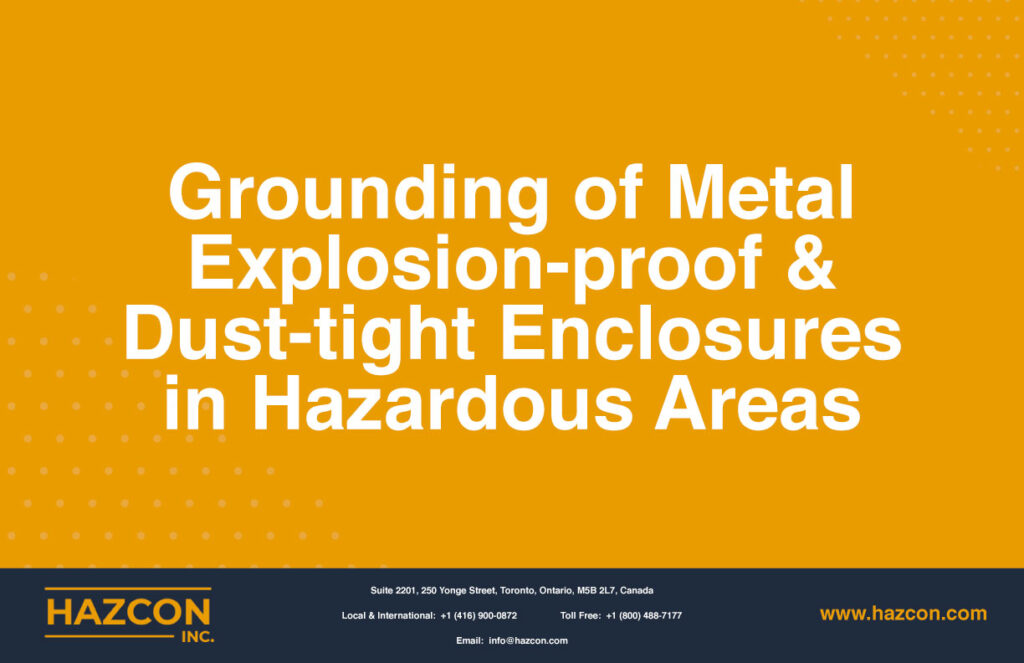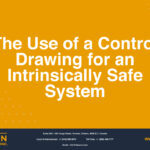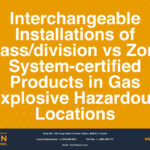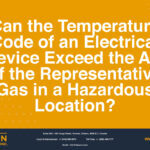
Grounding of Metal Explosion-proof & Dust-tight Enclosures in Hazardous Areas
Grounding or earthing is necessary for electrical safety in non-hazardous locations as well as in hazardous locations.
Grounding of metal enclosures in non-hazardous areas prevents electrical shock and enables protective devices to operate properly – keeping the duration of fault currents to a minimum.
Explosion-proof equipment are designed to withstand an internal explosion, prevent the ignition of any gas surrounding the enclosure and dust-tight equipment prevent the ingress of explosive dust into the enclosure. Therefore, internal faults are safe.
So why is grounding important for metal enclosures that are explosion-proof and/or dust-tight?
If there is any internally arcing fault to a metal enclosure:
- Faulted current flows through the metal enclosure (explosion proof or dust-tight) and it is only a matter of time before the external surface of the enclosure (at the point of the fault) reaches a temperature that can cause ignition of surrounding explosive gases, accumulated combustible dusts, or easily ignited fibers or flyings.
- When faulted current flows through the metal conduit system, every connection point or gap in the conduit or piping system can be a potential source of sparks and therefore a potential source of ignition.
Conductive enclosures, then, must be safe to touch, even if fault conditions exist. If a fault does occur, there must be an adequate return path for the current, which will quickly and effectively trip overcurrent protective devices. There can be no arcing caused by current returning within the wiring system. Such arcs reaching the explosive atmosphere would spell disaster!
A solid, low resistance path is required, which will direct the faulted heavy current back to the main panelboard or switchboard in order for the protective devices to interrupt the circuits quickly. Speed is critical. In this way, a hot spot on the external surface of the enclosure will be prevented. Sparks or arcs between the connections in the wiring system will also be prevented.
In addition to the possibility of arcs and sparks or overheated parts as a result of faults, grounding is also necessary to prevent the buildup of static electrical charges.
Intrinsically safe circuit designs, particularly those using a Zener barrier, require an extremely low-impedance path to a common ground point, which assures the proper operation of the safety devices provided.
Request a Consultation
Complete the form below to get started.






